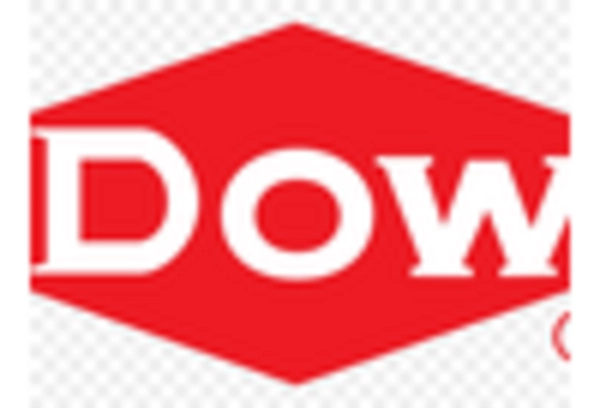Rising Demand in Cosmetics
The Methylparaben Market is experiencing a notable increase in demand, particularly within the cosmetics sector. As consumers become more aware of product formulations, the inclusion of preservatives like methylparaben is often scrutinized. Despite this, methylparaben remains a popular choice due to its effectiveness in preventing microbial growth and extending shelf life. The cosmetics industry, valued at several hundred billion dollars, relies heavily on such preservatives to ensure product safety and longevity. This trend suggests that as the cosmetics market continues to expand, the demand for methylparaben will likely follow suit, reinforcing its position within the Methylparaben Market.
Growth in Personal Care Products
The Methylparaben Market is significantly influenced by the growth of personal care products. With an increasing number of consumers prioritizing personal hygiene and grooming, the demand for lotions, shampoos, and other personal care items is on the rise. Methylparaben serves as a crucial preservative in these products, ensuring they remain safe for use over time. The personal care market is projected to reach substantial figures in the coming years, which may lead to a corresponding increase in the utilization of methylparaben. This growth trajectory indicates a robust future for the Methylparaben Market as it aligns with consumer preferences for effective and safe personal care solutions.
Evolving Food and Beverage Sector
The Methylparaben Market is also impacted by developments in the food and beverage sector. As food safety regulations become more stringent, the need for effective preservatives has surged. Methylparaben is utilized in various food products to inhibit spoilage and maintain quality. The food and beverage industry, which is a multi-trillion dollar market, is increasingly adopting methylparaben as a viable option for extending shelf life. This trend suggests that as the industry evolves and adapts to consumer demands for longer-lasting products, the Methylparaben Market will likely see a corresponding increase in usage.
Regulatory Support for Preservatives
The Methylparaben Market is supported by regulatory frameworks that endorse the use of preservatives in various applications. Regulatory bodies have established guidelines that recognize the safety and efficacy of methylparaben when used within specified limits. This regulatory backing is crucial for manufacturers, as it provides assurance regarding the compliance of their products. As regulations evolve, the Methylparaben Market is likely to benefit from a stable environment that encourages the continued use of methylparaben in cosmetics, personal care, and food products. This regulatory support may foster growth and innovation within the industry.
Technological Advancements in Preservation
Technological advancements in preservation methods are shaping the Methylparaben Market. Innovations in formulation and preservation techniques are enhancing the efficacy of methylparaben, making it a preferred choice among manufacturers. These advancements not only improve product stability but also address consumer concerns regarding safety and efficacy. As companies invest in research and development to optimize the use of methylparaben, the market is expected to benefit from increased adoption rates. This evolution in preservation technology indicates a promising outlook for the Methylparaben Market, as it aligns with the ongoing quest for improved product formulations.

















Leave a Comment